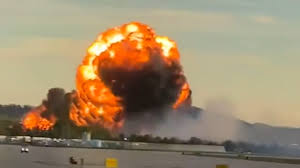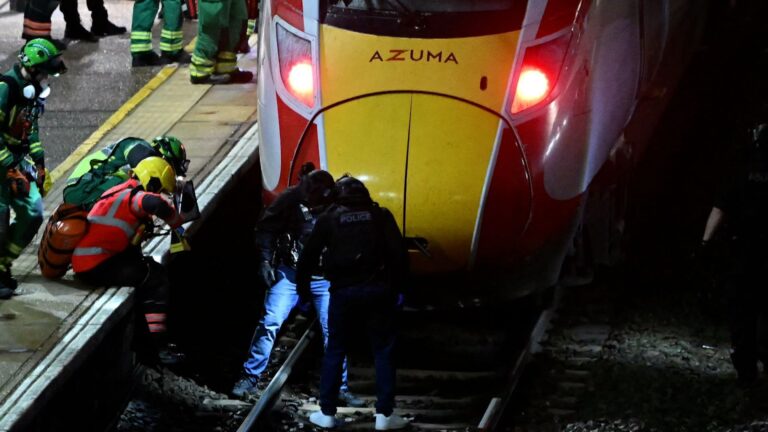Trump considering plans to target cocaine facilities inside Venezuela, officials say
Trump Weighs Military Strikes on Drug Routes Inside Venezuela
Updated October 24, 2025
President Donald Trump is reportedly considering plans to target cocaine facilities and drug trafficking routes inside Venezuela, though no final decision has been made, according to three U.S. officials who spoke to CNN.
Outward signs on Friday indicated a potential major military escalation, as Defense Secretary Pete Hegseth ordered the Navy’s most advanced aircraft carrier strike group, currently stationed in Europe, to reposition to the Caribbean region amid a significant buildup of U.S. forces. Trump has also authorized the CIA to conduct covert operations in Venezuela.
Despite these moves, officials say the president has not ruled out pursuing a diplomatic approach to curb drug inflows from Venezuela, even though talks with President Nicolás Maduro were recently cut off. Venezuela is not a major source of cocaine, but the Trump administration has been working to link Maduro to the drug trade.
“There are plans on the table that the president is considering regarding operations on targets inside Venezuela,” one administration official said, adding that “he hasn’t ruled out diplomacy.”
Another official involved in the discussions said several proposals have been presented to the president, while a third confirmed that planning efforts are ongoing across multiple government agencies.
In recent days, Trump has escalated his rhetoric about possible land strikes inside Venezuela, even as the U.S. military continues targeting drug boats in international waters. The latest operation reportedly struck a narcotics-smuggling vessel in the Caribbean overnight, killing six people — bringing the total number of destroyed boats to 10 and fatalities to 43 since the campaign began last month, according to Hegseth.
CNN previously reported that Trump had been considering direct strikes inside Venezuela as part of a broader effort to undermine Maduro’s regime. Secretary of State Marco Rubio hinted that such operations could target drug “routes” rather than civilian infrastructure.
Some administration officials believe a drug-focused campaign could ultimately lead to regime change, by pressuring Maduro’s inner circle — many of whom are allegedly tied to illicit drug revenues — to turn against him. Meanwhile, a newly released video shows Maduro appealing for peace in English.
However, the United Nations Office on Drugs and Crime (UNODC) maintains that Venezuela is not a cocaine-producing country. Nearly all coca cultivation — the raw ingredient for cocaine — is located in Colombia, Peru, and Bolivia. A recent U.S. Drug Enforcement Administration (DEA) report also made no mention of Venezuela in its section on cocaine trafficking, instead citing Ecuador, Central America, and Mexico as key transit routes.
Despite this, Trump administration officials continue to argue that some trafficking routes pass through Venezuela, and they point to Maduro’s 2020 indictment on U.S. federal charges of narco-terrorism and cocaine conspiracy.
“Nicolás Maduro is an indicted drug trafficker in the United States — a fugitive from American justice,” Rubio said during a September trip to Ecuador.
Officials emphasize that the president is “not in a rush” to make a final decision, as his attention is currently focused on upcoming trips to Asia and ongoing negotiations with Russia and Ukraine over their war.
Although Trump has expressed interest in diplomacy, he abruptly ended backchannel talks with Maduro earlier this month. Those discussions had been led by Richard Grenell, his special presidential envoy.
U.S. officials acknowledge that any offensive operation inside Venezuela would likely require Congressional approval or, at minimum, briefings to key lawmakers.
Still, Trump told CNN on Thursday that he could continue to launch strikes against foreign drug traffickers without an official declaration of war, saying,
“I’m not going to necessarily ask for a declaration of war. I think we’re just going to kill people that are bringing drugs into our country. Okay? We’re going to kill them — they’re going to be dead.”
The buildup of U.S. military assets in the region has fueled speculation about the administration’s true intent. According to Pentagon Press Secretary Sean Parnell, the deployment of the USS Gerald R. Ford Strike Group and its air wing is aimed at “dismantling transnational criminal organizations and countering narco-terrorism.”
The Ford strike group, which docked near Split, Croatia, on October 21, remains more than 5,000 miles from the Caribbean, meaning it could take several days to reach operational range.
Even before its redeployment, a substantial portion of U.S. naval assets had already been shifted to U.S. Southern Command, which oversees operations in Latin America. This includes the Iwo Jima Amphibious Ready Group, the 22nd Marine Expeditionary Unit (over 4,500 Marines and sailors), three guided-missile destroyers, an attack submarine, a guided-missile cruiser, and P-8 Poseidon reconnaissance aircraft.
The U.S. has also deployed 10 F-35 fighter jets and at least three MQ-9 Reaper drones to Puerto Rico, which has become a central hub for U.S. military activity in the Caribbean. Satellite imagery further shows that Naval Station Roosevelt Roads in Puerto Rico — closed since 2004 — has been reactivated to support the mission.



